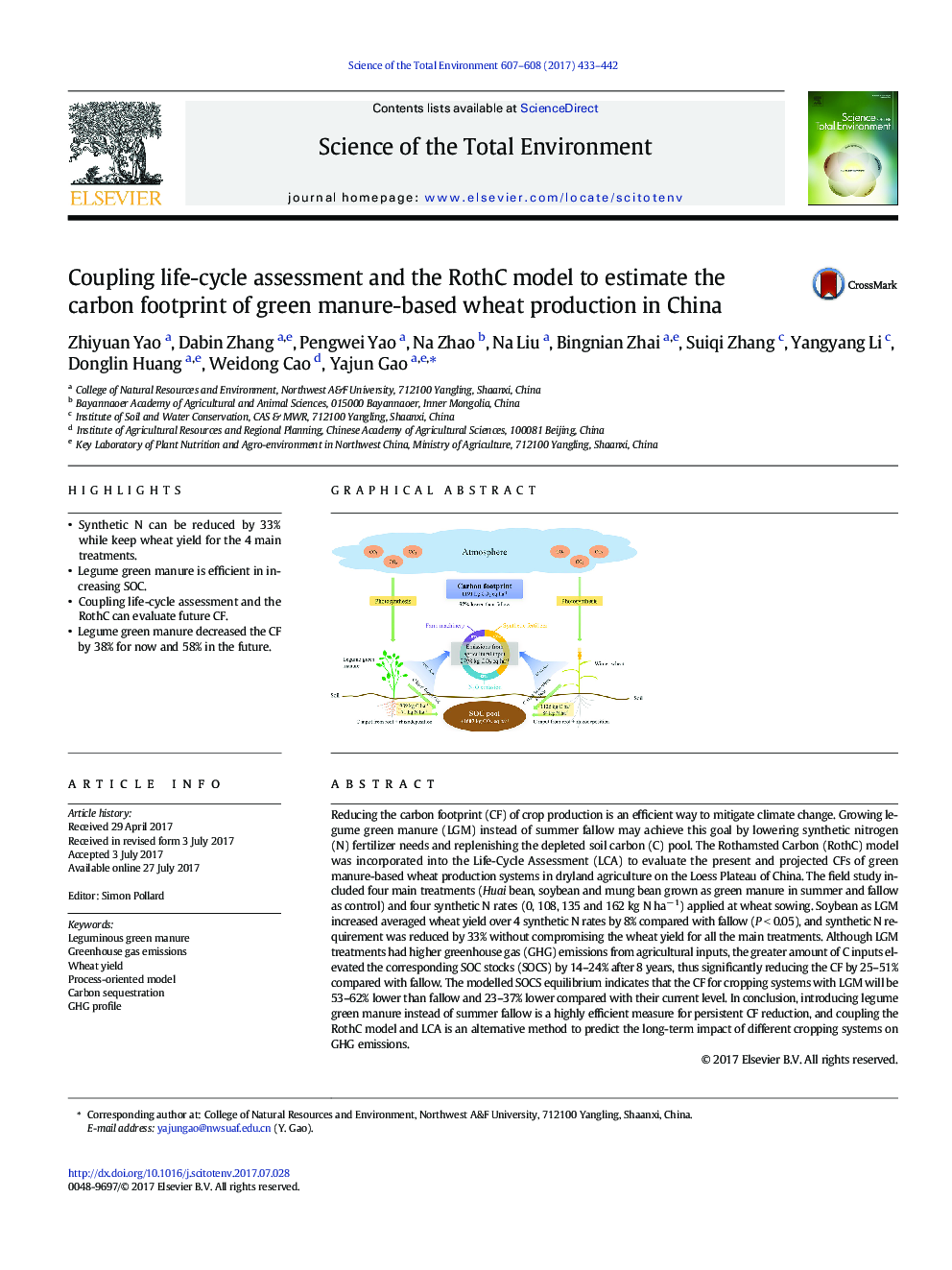| کد مقاله | کد نشریه | سال انتشار | مقاله انگلیسی | نسخه تمام متن |
|---|---|---|---|---|
| 5750001 | 1619694 | 2017 | 10 صفحه PDF | دانلود رایگان |

- Synthetic N can be reduced by 33% while keep wheat yield for the 4 main treatments.
- Legume green manure is efficient in increasing SOC.
- Coupling life-cycle assessment and the RothC can evaluate future CF.
- Legume green manure decreased the CF by 38% for now and 58% in the future.
Reducing the carbon footprint (CF) of crop production is an efficient way to mitigate climate change. Growing legume green manure (LGM) instead of summer fallow may achieve this goal by lowering synthetic nitrogen (N) fertilizer needs and replenishing the depleted soil carbon (C) pool. The Rothamsted Carbon (RothC) model was incorporated into the Life-Cycle Assessment (LCA) to evaluate the present and projected CFs of green manure-based wheat production systems in dryland agriculture on the Loess Plateau of China. The field study included four main treatments (Huai bean, soybean and mung bean grown as green manure in summer and fallow as control) and four synthetic N rates (0, 108, 135 and 162 kg N haâ 1) applied at wheat sowing. Soybean as LGM increased averaged wheat yield over 4 synthetic N rates by 8% compared with fallow (P < 0.05), and synthetic N requirement was reduced by 33% without compromising the wheat yield for all the main treatments. Although LGM treatments had higher greenhouse gas (GHG) emissions from agricultural inputs, the greater amount of C inputs elevated the corresponding SOC stocks (SOCS) by 14-24% after 8 years, thus significantly reducing the CF by 25-51% compared with fallow. The modelled SOCS equilibrium indicates that the CF for cropping systems with LGM will be 53-62% lower than fallow and 23-37% lower compared with their current level. In conclusion, introducing legume green manure instead of summer fallow is a highly efficient measure for persistent CF reduction, and coupling the RothC model and LCA is an alternative method to predict the long-term impact of different cropping systems on GHG emissions.
189
Journal: Science of The Total Environment - Volumes 607â608, 31 December 2017, Pages 433-442